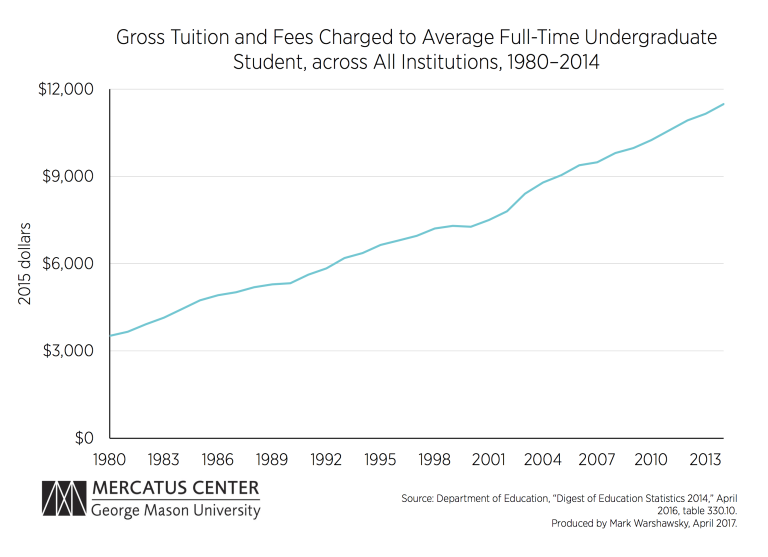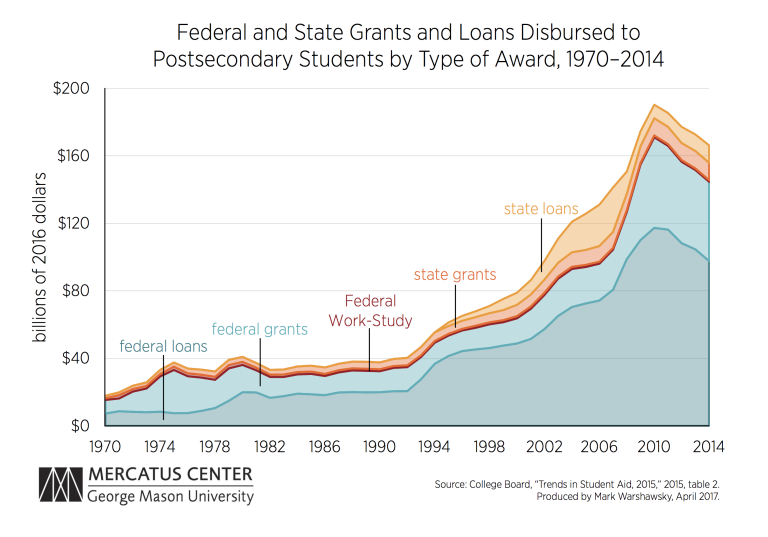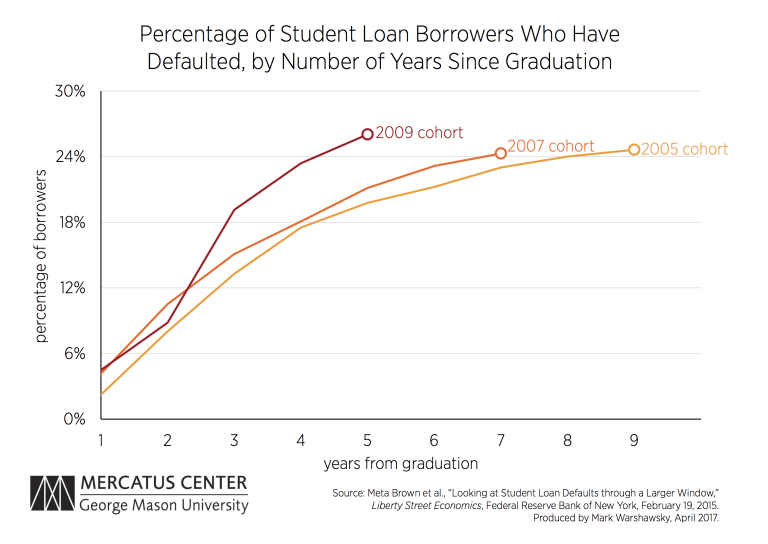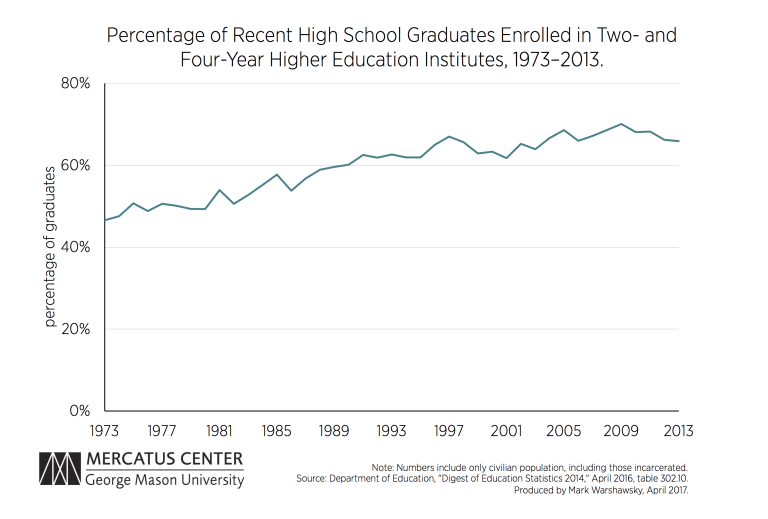- | Government Spending Government Spending
- | Data Visualizations Data Visualizations
- |
Increased Federal Funding for Higher Education Produces Adverse Effects

Conventional wisdom suggests that expansions in federal student aid will result in a more affordable and equitable postsecondary education system—a system that has seen tuition triple, in real terms, across American universities over the past four decades. This belief has motivated significant expansions of federal aid for students. However, the following charts show that increases in federal funding for higher education have done little to make college more affordable.



Some students, particularly from nontraditional backgrounds, seem to have been harmed by the increase in federal funding of student loans. They have not seen increases in their incomes as workers, have often not completed their education, are more likely to default on their loans, and miss out on job-related income and training.

Further increases in federal support for higher education are not needed, and indeed are likely to be counterproductive, because they lead to higher tuition for all students. The resultant increase in tuition, decline in average student quality, and increase in student loan defaults should lead policymakers to question whether the massive increase in federal support for higher education is achieving its goals. A robust parallel system of on-the-job training, apprenticeships, and youthful practical work experience is needed, supported by changes in federal laws and regulations, such as lowering the minimum wage for younger workers.